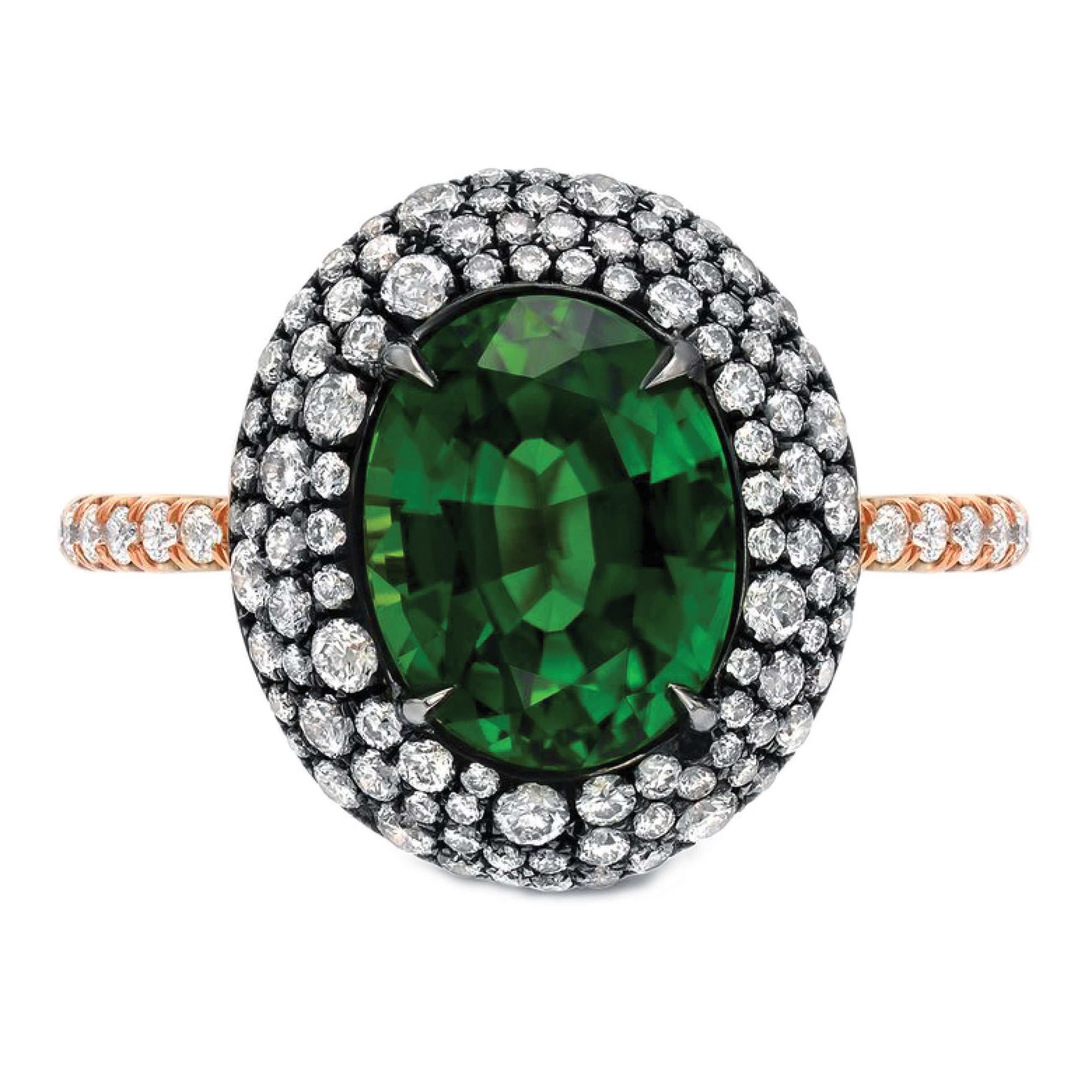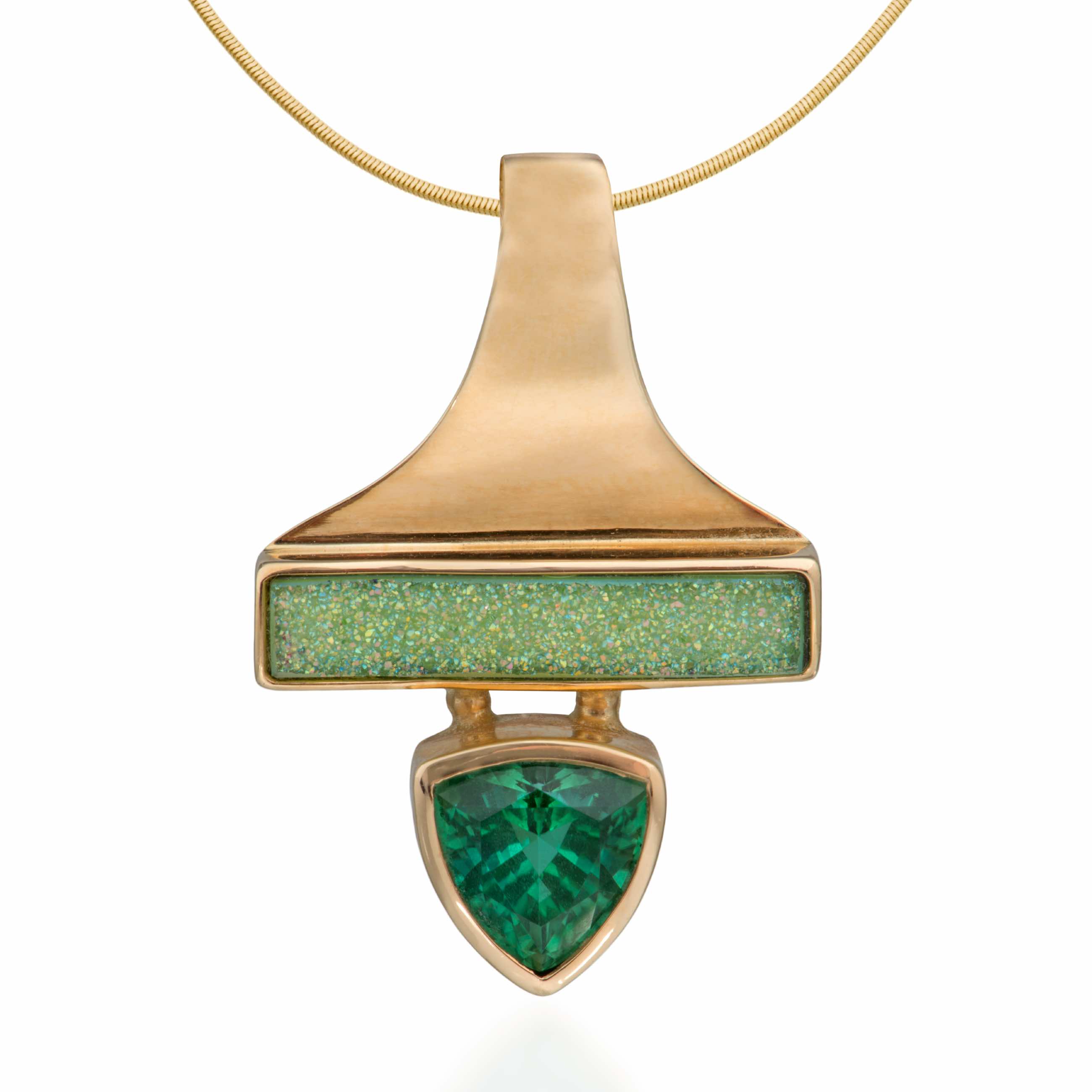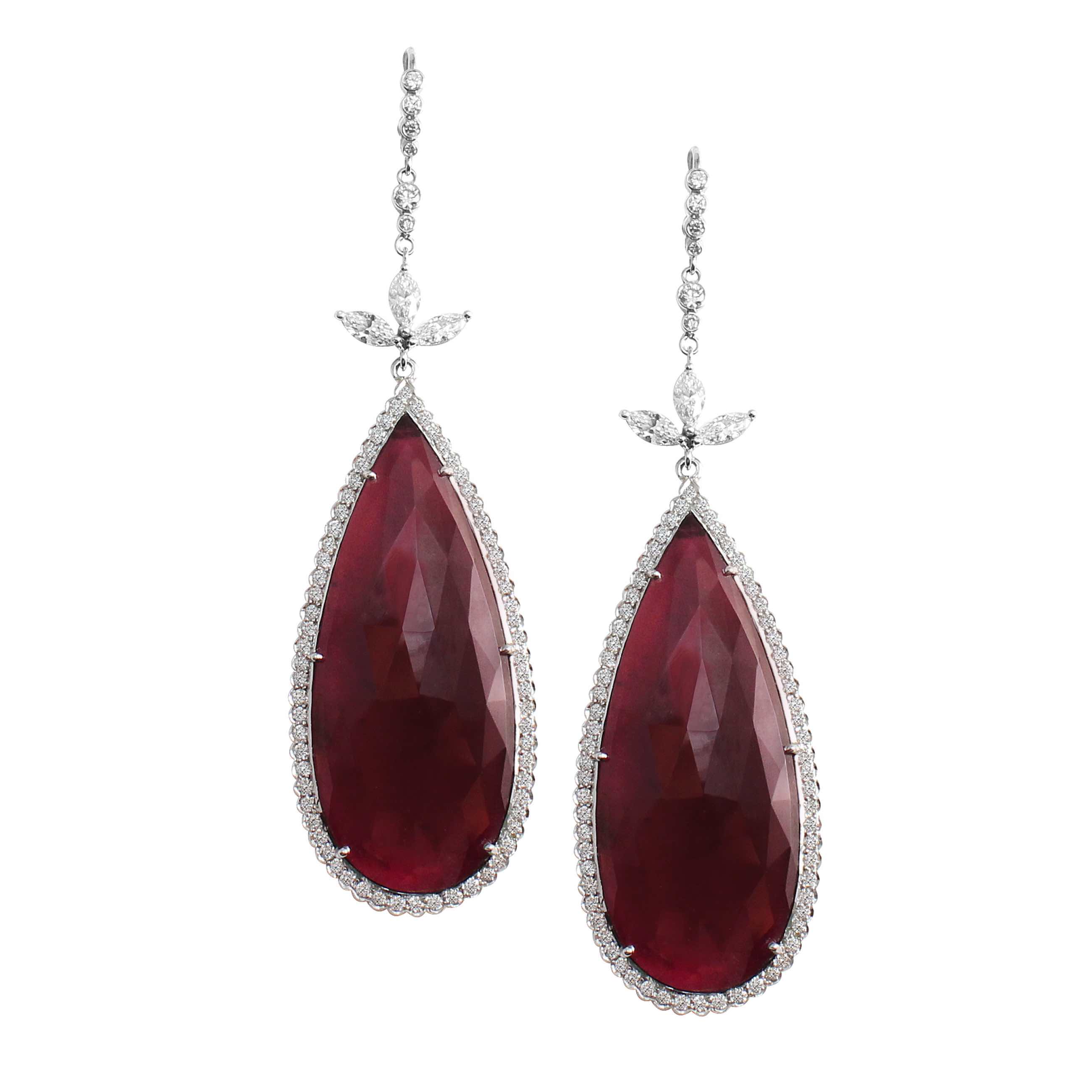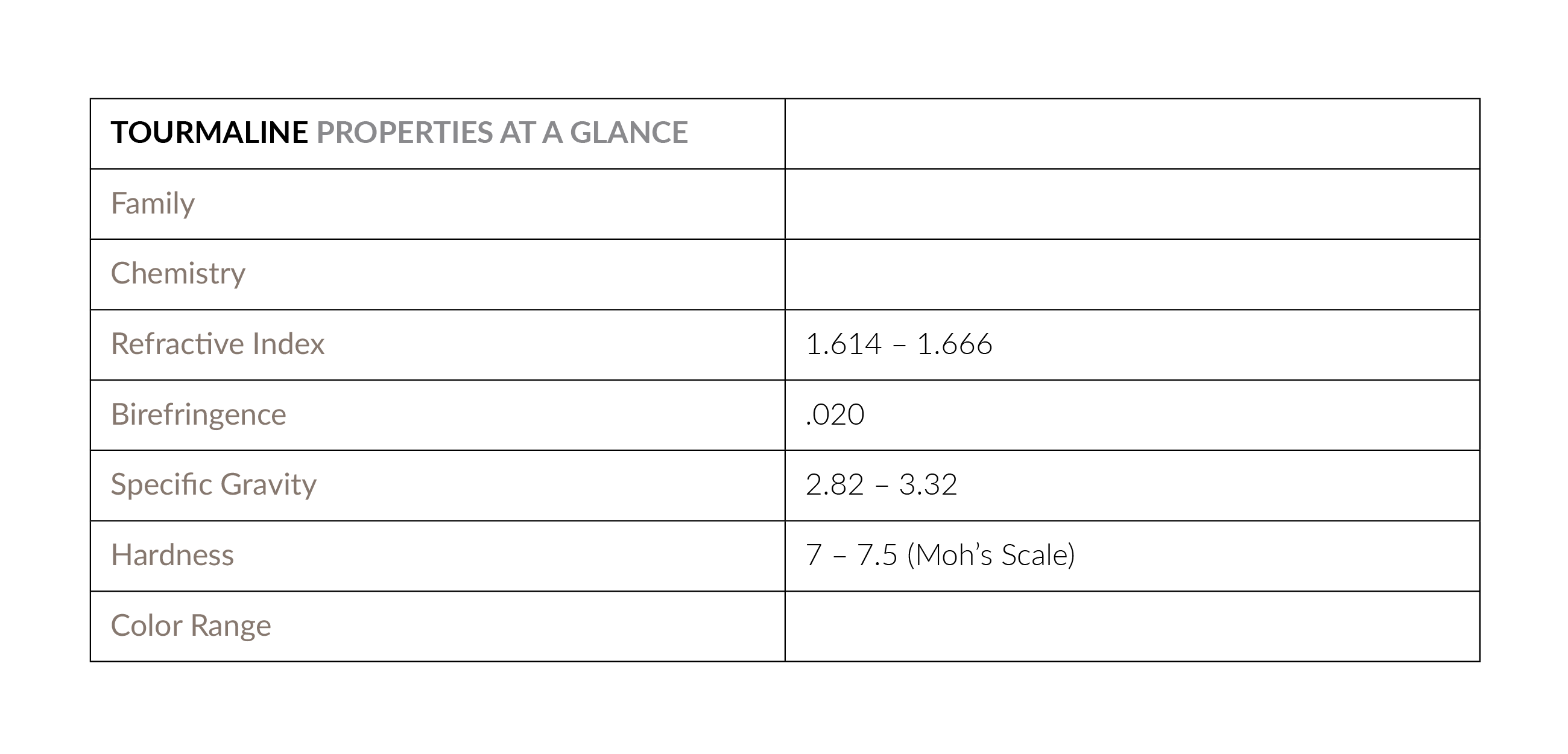
TOURMALINE: October Birthstone

ROMANCE, HISTORY & LORE
When Dutch traders returned with gems from Sri Lanka in the early 1700’s, they called any unfamiliar stones by the Sinhalese name “turamali” meaning “stones with mixed colors.” Thus, any stone not recognized as a ruby or sapphire simply became a “turmali.”
Since then, science has enabled us to distinguish and classify the gems, which included zircons, fancy sapphires, beryls, chrysoberyls, feldspars and garnets, as well as gems belonging to a broad species now known as tourmaline.


Tourmaline is a relatively modern gemstone; only since the gemological boom of the 1970s was it widely appreciated. During this time, designers began experimenting with exciting techniques and unconventional settings, and the world took notice of tourmaline’s incredible variety.

ORIGINS
Tourmaline occurs throughout the world. The United States has been a major contributor to tourmaline’s popularity. During the early 1900’s, Maine and California were the world’s largest producers of gem tourmalines. California is known for pink tourmaline and Maine is known for sherbet-colored and mint green-colored tourmalines. Today, Brazil produces the largest volume of this gemstone, as well as the widest color variety for a single location. Nigeria has also seen recent production of tourmaline in unusual colors and sizes. Regions of lesser tourmaline production include Afghanistan, Pakistan, Kenya, Tanzania, Madagascar and Mozambique.
SELECTING A STONE
The selection of available tourmaline jewelry is as diverse as the gemstone’s color varieties. And because of its abundance of color, size, and quality, the price range of tourmaline is tremendous. Unlike many gemstones, tourmaline’s hexagonal crystal shape is often set into jewelry as-is. Suites of tourmaline stones are often made into matching pendants, earring sets, and beaded bracelets. A favorite of unconventional designers and lapidaries, tourmaline can grace traditional designs alongside diamond, and also be cut to unusual shapes or sizes. The finished product is limited only by the designer’s imagination.
With a hardness of 7 – 7.5, tourmaline is quite resistant to scratching, chipping, and cracking, making it an excellent choice for everyday wear.


SPECIAL PROPERTIES
Although green is the most common hue, tourmaline naturally occurs in virtually thousands of shades, tones and color combinations—more than any other gemstone. One of the most distinctive features of tourmalines is pleochroism, the presence differing colors or depths of color when the gem is rotated. Because of its strong pleochroism, tourmaline is especially adored by skilled lapidaries, who can cut the gemstone in such a way that it appears multicolored.
While almost all gems are a variety of a single mineral, tourmaline is comprised of a group of minerals. These minerals’ chemical compositions and crystalline structures work in concert to produce tourmaline’s beautiful coloring. Because of tourmaline’s endless color spectrum, most shades don’t have a particular name— they are simply called “pink” tourmaline or “golden” tourmaline. However, there are also some distinct categories: Rubellite tourmaline is a reddish-pink variation often confused with rubies and pink sapphires. Indicolite tourmaline offers hues of minty blue. Stones of the purest blue are particularly sought-after. Chrome tourmaline is a grassy green considered distinct from green tourmaline, due to the presence of chromium. Found in East Africa, chrome tourmaline is rare and usually found in smaller sizes. Watermelon tourmaline is a phenomenon in which a tourmaline crystal has a core of pinkish-red surrounded by layers of white and green. When cut correctly, the resulting stone resembles a slice of watermelon. Paraíba tourmaline, the most expensive of tourmalines, is a copper-bearing, electric blue-green stone. Originating in Paraíba, Brazil, its occurrence is very rare, and it commands high prices. The color of Caribbean seas, Paraíba tourmaline’s most unusual trait is its mystical fluorescent glow. Rare tourmalines also exhibit the chatoyant or cat’s-eye phenomenon. This occurs when natural thread-like cavities running parallel to the length of the crystal are cut en cabochon.


ENHANCEMENTS
Although some Paraíba tourmaline is both heated and irradiated to improve its color, most tourmaline remains untreated. Rough tourmaline often appears similar to the gemstones found in finished jewelry pieces. Any treatments applied to a tourmaline gemstone should be disclosed on the stone’s bill of sale.

CARE
When using commercially-made jewelry cleaner, coat the jewelry for a few minutes, then use a soft brush to dislodge accumulated grime. Let dry on a soft cloth and store. A gentle solution of warm water and gentle dish detergent also safely cleans tourmaline jewelry. Let the piece “sleep” overnight in a basin of water with a drop or two of detergent. In the morning, use a soft brush to clean the back of the stone, and its sparkle will return immediately. Take care to not leave tourmaline submerged longer than overnight, and avoid submerging beads, cloth, or cord. To clean strands of beads, wipe them with a wet cloth after each wear. As with all jewelry, tourmaline pieces should be removed at night.

